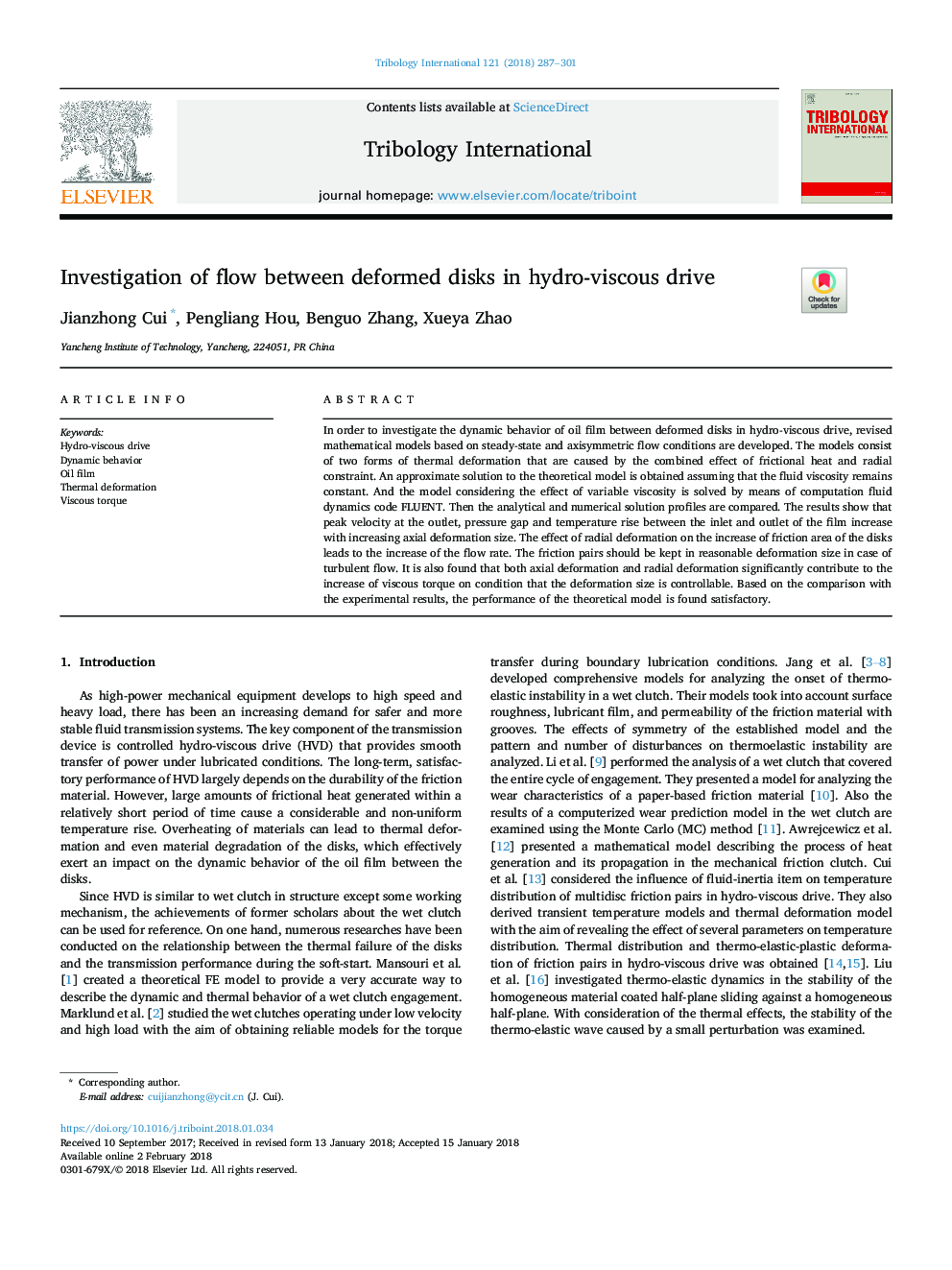| Article ID | Journal | Published Year | Pages | File Type |
|---|---|---|---|---|
| 7001908 | Tribology International | 2018 | 15 Pages |
Abstract
In order to investigate the dynamic behavior of oil film between deformed disks in hydro-viscous drive, revised mathematical models based on steady-state and axisymmetric flow conditions are developed. The models consist of two forms of thermal deformation that are caused by the combined effect of frictional heat and radial constraint. An approximate solution to the theoretical model is obtained assuming that the fluid viscosity remains constant. And the model considering the effect of variable viscosity is solved by means of computation fluid dynamics code FLUENT. Then the analytical and numerical solution profiles are compared. The results show that peak velocity at the outlet, pressure gap and temperature rise between the inlet and outlet of the film increase with increasing axial deformation size. The effect of radial deformation on the increase of friction area of the disks leads to the increase of the flow rate. The friction pairs should be kept in reasonable deformation size in case of turbulent flow. It is also found that both axial deformation and radial deformation significantly contribute to the increase of viscous torque on condition that the deformation size is controllable. Based on the comparison with the experimental results, the performance of the theoretical model is found satisfactory.
Related Topics
Physical Sciences and Engineering
Chemical Engineering
Colloid and Surface Chemistry
Authors
Jianzhong Cui, Pengliang Hou, Benguo Zhang, Xueya Zhao,
